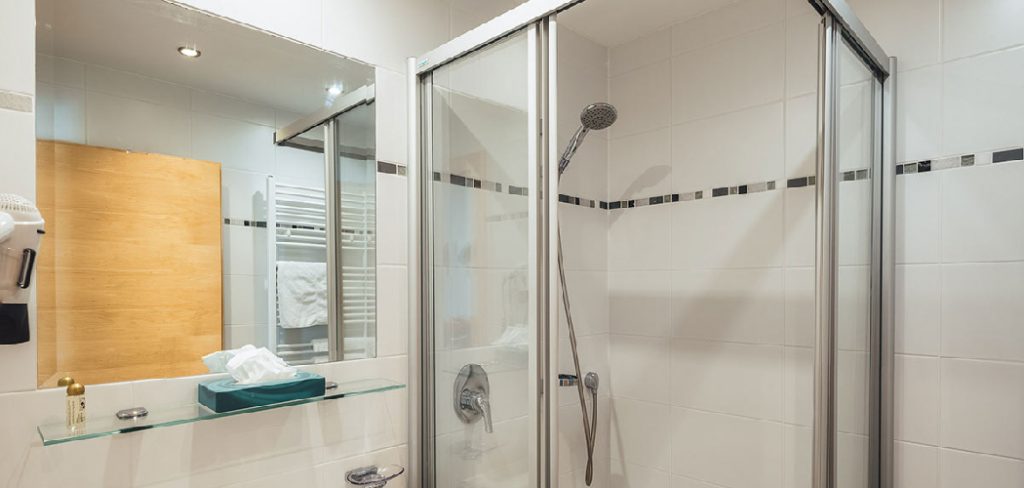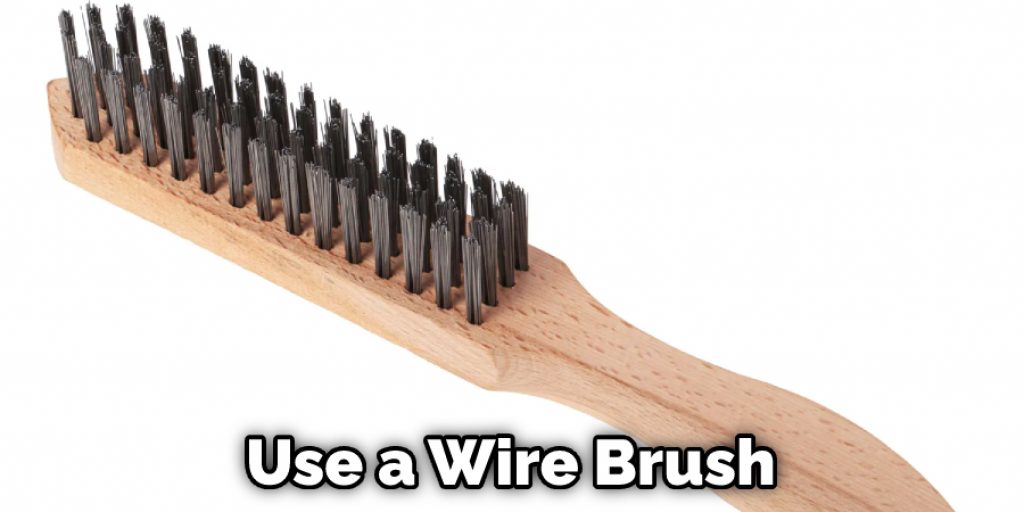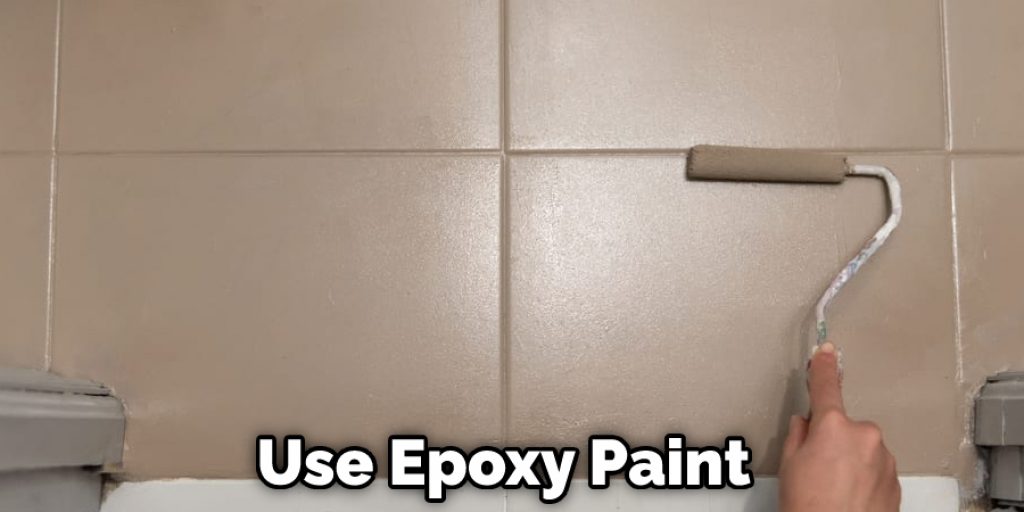It’s no secret that corrosion is a significant issue with aluminum shower frames. Unfortunately, it’s one of the most common problems reported by homeowners. But, if you’re dealing with a corroded frame, don’t worry – there are steps you can take to repair it. This article will show you how to repair corroded aluminum shower frame. So read on for information on repairing your corrupted aluminum shower frame!

There are a few reasons why it’s important to repair corroded aluminum shower frames. First, corrosion can lead to structural damage, dangerous and costly to fix. Second, corrosion can cause water leakage, creating a breeding ground for mold and other harmful bacteria. Third, corroded frames often look unsightly and can detract from the overall appearance of your bathroom. So if you’re dealing with a corroded aluminum shower frame, make sure to take steps to repair it!
Summary: Aluminum shower frames are susceptible to corrosion due to their frequent exposure to humidity and moisture. The best way to repair corroded aluminum shower frames is to remove the affected area using a grinder, sandpaper, or chemical rust remover. After removing the damaged area, you should clean the frame with mild detergent. Once the frame is dry, apply a specialized sealant designed specifically for use on aluminum surfaces.
How to Repair Corroded Aluminum Shower Frame Step by Step Guide
Step 1: Gather Necessary Tools and Supplies
Before you begin repairing your corroded aluminum shower frame, gather the necessary tools and supplies, including:
- Protective gloves
- Safety goggles
- Respirator or dust mask
- Stiff nylon brush or toothbrush
- Sandpaper (80-grit, 120-grit, and 220-grit)
- Aluminum cleaner or white vinegar
- Aluminum etching primer
- Aluminum paint or clear coat
- Paintbrush or small foam roller
- Soft cloth
Step 2: Remove the Corrosion
Put on your protective gloves, safety goggles, and respirator or dust mask. Using a stiff nylon brush or toothbrush, scrub the corroded areas of the aluminum shower frame to remove any loose corrosion and debris. Be sure to reach all affected areas, applying firm pressure to break up and remove the corrosion.
Step 3: Sand the Affected Areas
Start with 80-grit sandpaper and gently sand the corroded areas of the aluminum shower frame. The goal is to remove any remaining corrosion and create a smooth, even surface. After sanding with 80-grit sandpaper, progress to 120-grit and then 220-grit sandpaper, smoothing the surface further with each pass. Be cautious not to sand through the aluminum, as this could weaken the shower frame.
Step 4: Clean the Aluminum Shower Frame
After sanding, clean the entire aluminum shower frame to remove any dust, debris, or residue from the sanding process. You can use a commercial aluminum cleaner or a mixture of white vinegar and water. Apply the cleaning solution with a soft cloth and scrub gently to remove any remaining dirt or grime. Rinse the frame thoroughly with clean water and allow it to dry completely before proceeding.
Step 5: Apply Aluminum Etching Primer
Before painting or clear coating the shower frame, apply an aluminum etching primer to the affected areas. This type of primer is specifically designed for use on aluminum surfaces and will help the paint or clear coat adhere properly. Follow the manufacturer’s instructions for application and drying times. Typically, one or two coats of primer are recommended, with a drying time of at least 30 minutes between coats.
Step 6: Paint or Clear Coat the Aluminum Shower Frame
Once the etching primer is dry, you can apply paint or a clear coat to the aluminum shower frame. Choose a paint or clear coat that is specifically designed for use on aluminum and is suitable for high-moisture environments. Apply the paint or clear coat using a paintbrush or small foam roller, following the manufacturer’s instructions for application and drying times. Apply at least two coats, allowing each coat to dry fully before applying the next.
Step 7: Inspect the Repair
After the paint or clear coat has dried, inspect the repaired areas of the aluminum shower frame to ensure that the corrosion has been effectively addressed. The surface should be smooth, free of corrosion, and properly sealed to prevent future damage. If necessary, apply additional coats of paint or clear coat until the desired finish and protection are achieved.
Step 8: Maintain the Aluminum Shower Frame
Regular maintenance of your aluminum shower frame can help prevent future corrosion and extend the life of the frame. Clean the shower frame regularly using a mild detergent or a mixture of white vinegar and water to remove soap scum, dirt, and mineral deposits. Avoid using harsh chemicals or abrasive cleaning tools, as these can damage the aluminum surface and contribute to corrosion.
Step 9: Monitor for Signs of Corrosion
Periodically inspect your aluminum shower frame for signs of new or recurring corrosion. If you notice any areas of concern, address them promptly by following the repair steps outlined above. By staying proactive with maintenance and repair, you can keep your aluminum shower frame looking and functioning its best for years to come.
Step 10: Protect the Aluminum Frame from Moisture
One of the primary causes of corrosion in aluminum shower frames is prolonged exposure to moisture. To help prevent future corrosion, ensure that your bathroom has proper ventilation. This may include installing or upgrading an exhaust fan or regularly opening a window to allow moisture to escape. Additionally, use a squeegee or towel to wipe down the shower frame after each use to remove excess water and reduce the risk of corrosion.
Step 11: Replace Damaged or Worn Hardware
If the corrosion on your aluminum shower frame is accompanied by damaged or worn hardware, such as hinges or handles, consider replacing these components as part of your repair process. Replacing worn hardware can not only improve the overall appearance of your shower frame but also ensure that it functions properly and securely.
Step 12: Consider Sealing the Frame
To further protect your aluminum shower frame from corrosion, consider applying a protective sealant after the paint or clear coat has dried. Choose a sealant that is specifically designed for use on aluminum and is suitable for high-moisture environments. Follow the manufacturer’s instructions for application and drying times, and allow the sealant to cure fully before using the shower.
Step 13: Seek Professional Assistance if Needed
If you are not confident in your ability to repair a corroded aluminum shower frame or if the corrosion is extensive and beyond your skill level, consider seeking the assistance of a professional. A professional contractor or aluminum repair specialist will have the necessary tools, knowledge, and experience to properly diagnose and repair the problem, ensuring the longevity and structural integrity of your aluminum shower frame.
By following these steps and addressing the underlying causes of corrosion, you can effectively repair and protect your aluminum shower frame. Regular maintenance, proper ventilation, and proactive measures can help prevent future corrosion, ensuring that your shower frame remains functional and aesthetically pleasing for years to come. Remember that professional assistance is always recommended when dealing with complex repairs or issues beyond your skill level.
You Can Check It Out to Fix Bath Bombs That Are Too Wet
Frequently Asked Question
How Do You Restore the Aluminium Shower Frame?
There are a few ways that you can restore the aluminum shower frame. First, you can use a wire brush to clean off the corrosion and then use a primer and paint to coat the frame. Another way is to use sandpaper to remove the corrosion and then use a sealant to protect the frame.
How Do You Remove Corrosion from A Shower Frame?
There are a few ways that you can remove corrosion from a shower frame. You can use a wire brush to clean off the corrosion and then use a primer and paint to coat the frame. Another way is to use sandpaper to remove the corrosion and then use a sealant to protect the frame.

How Do You Clean Oxidized Aluminum Shower Doors?
To clean oxidized aluminum shower doors, you can use a wire brush to remove the oxidation and then use a primer and paint to coat the frame. Another way is to use sandpaper to remove the oxidation and then use a sealant to protect the frame.
Can You Paint an Aluminum Shower Frame?
Yes, you can paint an aluminum shower frame by using a wire brush to clean off the corrosion and then using a primer and paint to coat the frame. Another way is to use sandpaper to remove the corrosion and then use a sealant to protect the frame.
Does Spray Painting Shower Fixtures Last?
The answer to this question is it depends. If you use good quality paint and a primer, the paint will last for a while. However, if you do not use a primer, the color will not last as long.
Can You Paint a Shower Surround?
Yes, you can paint a shower surround using a wire brush to clean off the corrosion and then use a primer and paint to coat the frame. Another way is to use sandpaper to remove the corrosion and then use a sealant to protect the frame.
What Is the Best Paint to Use in A Shower?
The best paint to use in a shower is high-quality paint that will resist moisture and humidity.
Can You Use Epoxy Paint on Shower Walls?
You can use epoxy paint on glass shower walls by using a wire brush to clean off the corrosion and then use a primer and paint to coat the frame. Another way is to use sandpaper to remove the corrosion and then use a sealant.

Is There Waterproof Paint for Shower Walls?
There is waterproof paint for shower walls, but it is not necessary to use this type of paint if you use a high-quality primer and paint.
You Can Check It Out to: Repair Led Light Driver
Frequently Asked Questions
Can You Paint an Aluminum Shower Frame?
There is no one-size-fits-all answer to this question, as the method used will vary depending on the size and composition of your aluminum frame.
However, some tips that may help include using a wire brush or grill scraper to remove any rust or debris from the surface, using a degreaser such as acetone or trichloroethylene (TCE) followed by an acidic cleaner like lye solution, spraying a protective coating onto the frame with an outdoor paint sprayer, and sanding until you achieve desired finish.
What Does Clr Do to Aluminum?
Clr is a non-toxic, low-cost alternative to aluminum that can be used in a variety of applications. It has the same physical and chemical properties as aluminum and can be machined, galvanized, or painted just like a regular metal. Clr also has some unique features that make it ideal for certain applications such as appearing light but strong when printed on products or being stain resistant.
Clr’s high thermal conductivity makes it an excellent choice for use in cookware, outdoor equipment railing systems, automotive parts and accessories, building panels (such as garage doors), electrical wiring insulation materials (such as ductwork), and more.
Although Clr is becoming more popular each year due to its many benefits compared to traditional aluminum material sources, there are still some concerns regarding its safety. So far no injuries have been reported from contact with Clr surfaces however further research is needed before any definitive conclusions can be drawn about this material’s long-term health risks.
Can I Spray Paint My Shower Frame?
I’m sorry to hear that you are having trouble with your shower frame. While there are some DIY methods you could try, I would recommend contacting a professional contractor to take a look at the frame and come up with a solution. There may be something that can be done repair-wise, or maybe a new frame is in order. Either way, it would be best to get it fixed as soon as possible to avoid any long-term damage.
What Kind of Paint Do You Use on Shower Walls?
Shower walls are one of the most frequently painted sections of a home, and for good reason. Not only do they contain potentially harmful mold and mildew, but they also get exposed to a lot of water and moisture. That’s why it is important to use paint that is both waterproof and resistant to water damage.
There are many types of paint capable of meeting these requirements, but some of the best choices include latex paints, acrylics, or oil-based paints. All three have advantages and disadvantages: latex paints provide longevity and flexibility when painting over curved surfaces; acrylics can be quite affordable, but oil-based paints tend to be more durable than either type when it comes to weathering (including rain).
Ultimately, it is important to get advice from an experienced contractor if you’re planning on Painting your Shower Walls yourself.
Conclusion Paragraph
Although repairing corroded aluminum shower frames can be a daunting task, it is doable. With the right tools and supplies, you can have that frame looking as good as new in no time at all. Just make sure to take your time and be careful while working on the frame – safety should always be your top priority. Are you thinking of tackling this project yourself? If so, we wish you the best of luck! Thanks for reading our post about how to repair corroded aluminum shower frame.
You Can Check It Out to: Repair Cut Sprinkler Wire
